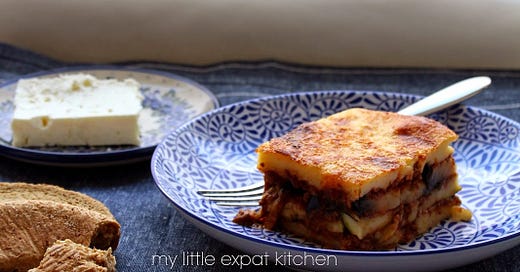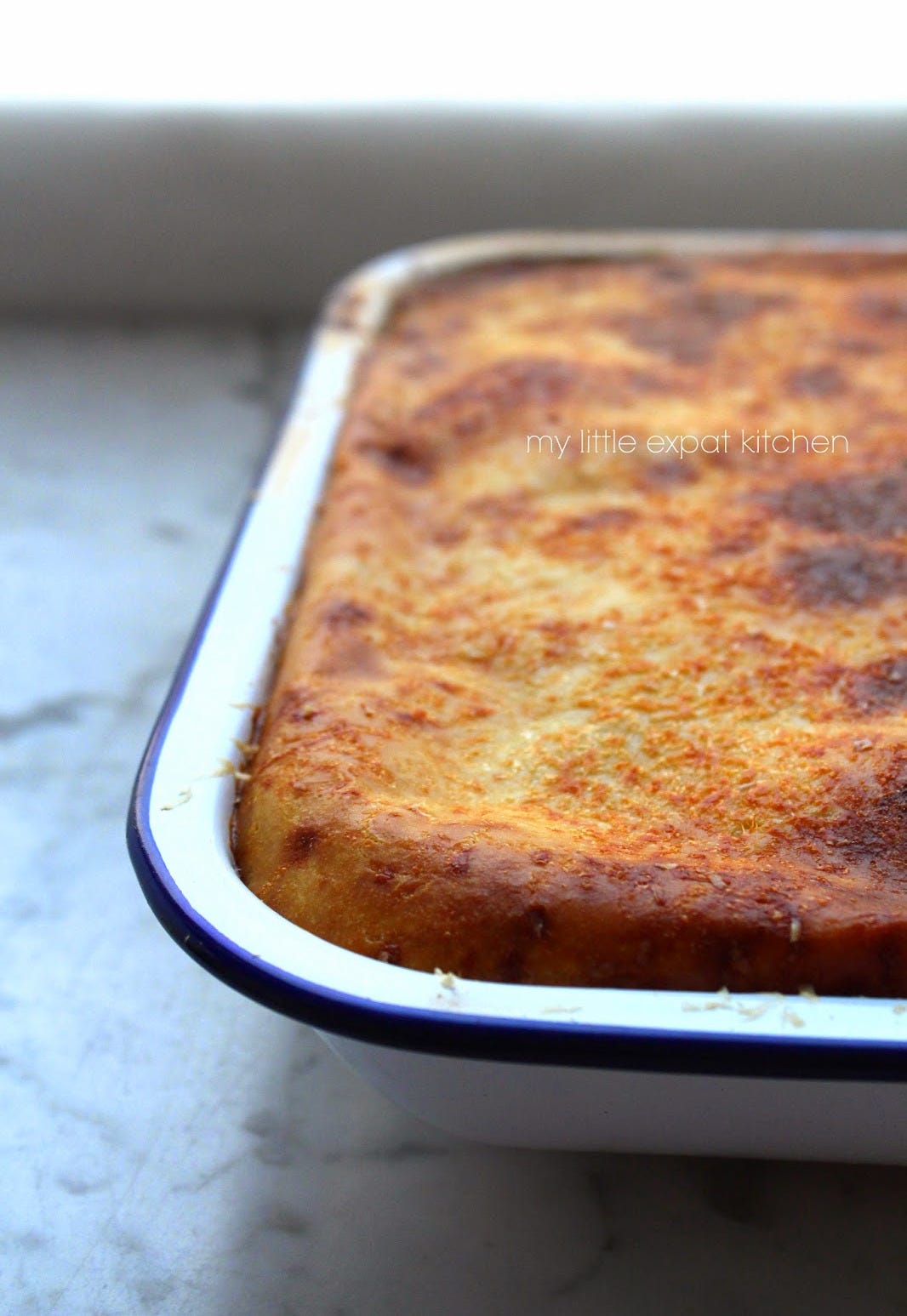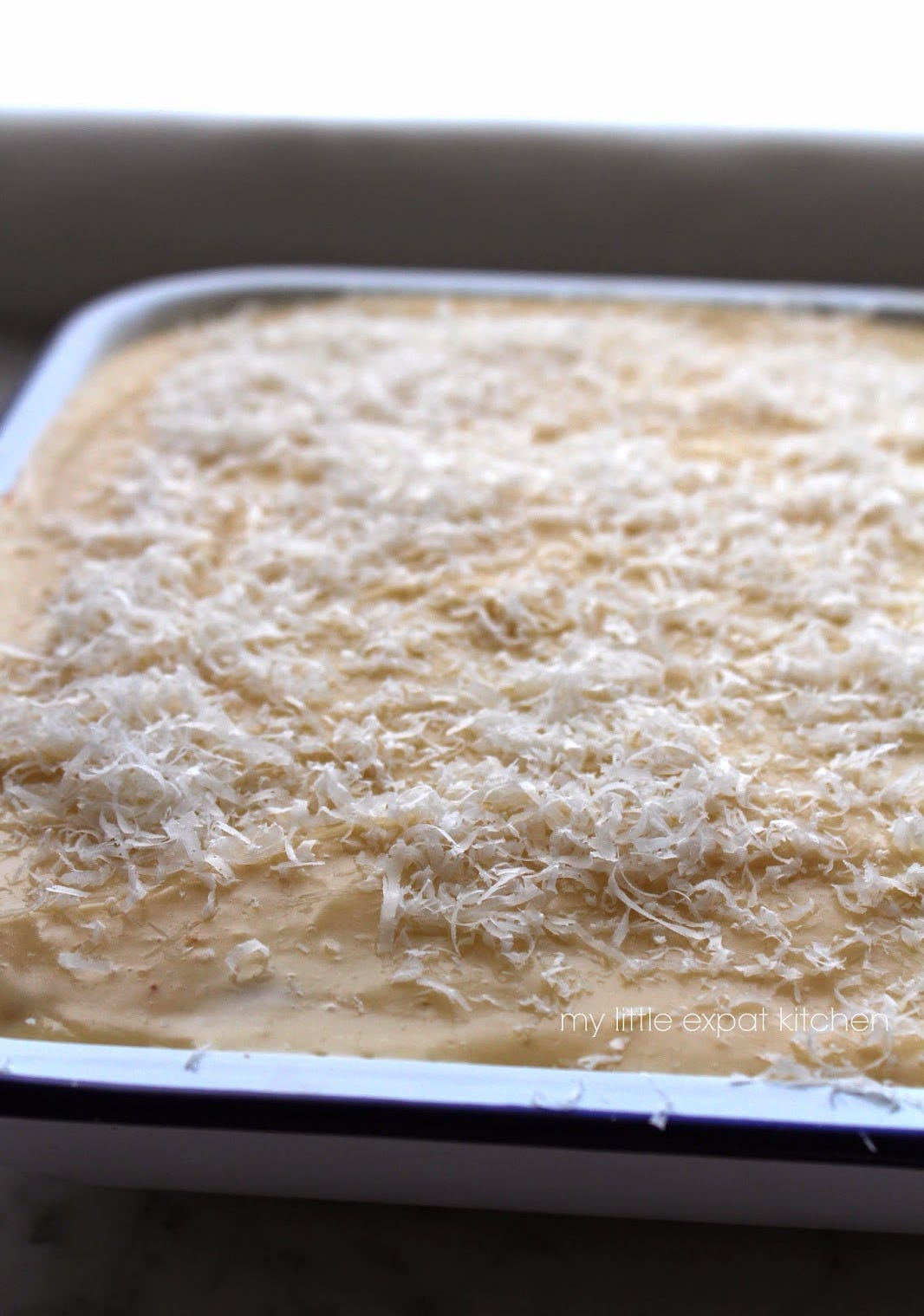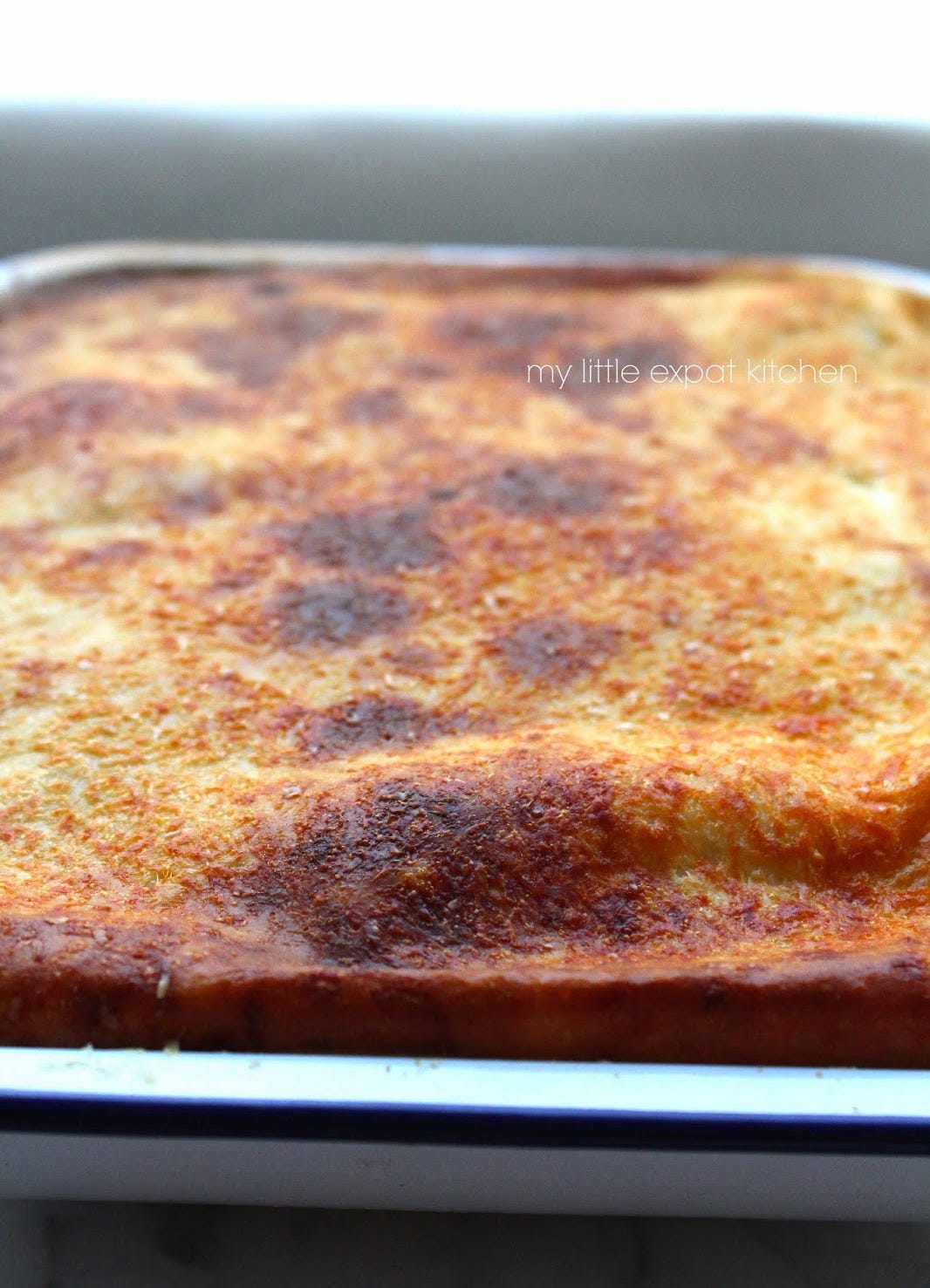Published originally on my blog on 20 October 2014
There is a lot of dispute among Greeks over what is a proper mousakas and even greater over what constitutes the perfect one.
Mousakas’ roots are not Greek—you can find versions of the dish in Arab/Middle Eastern and Balcan countries. It was Greek-ified in the first half of the 20th century by the French-trained Greek gastronomist Nikolaos Tselementes, who added the delicious, yet so un-Greek at the time, béchamel sauce on top of the layered dish and introduced it to Greek home-cooks through his cookbooks. Mousakas became part of Greek cuisine ever since, as did the béchamel sauce, that made its appearance on top of other Greek dishes like pastitsio.
Greek mousakas (μουσακάς) is commonly made with minced beef/veal sauce, fried eggplants, kefalotyri cheese and is topped off with an egg-enriched béchamel sauce. But then there are other versions including eggplant and potatoes, or eggplant and zucchini, or all three. My family’s version is the last one.
You will find many versions of mousaka among Greek homes and in restaurants or tavernas. A lot of them will not be good, most of them will have the wrong type of béchamel sauce that’s too thick, others that will be filled with grease and an inordinate amount of olive oil. Mousakas must be anything but oily, greasy and unsavory. It should be characterized as meaty, honeyed rich and luscious.
The meat sauce is traditionally rather rich in sweet spices like cinnamon and cloves, but my version is a little lighter. It is mostly tomato based rather than spiced, and it lends itself to a lighter mousaka. The eggplants, potatoes and zucchinis are all fried but yet are not as heavy as you would expect. Of course, being Greek and having grown up with this dish, I’m used to eating it, so to be honest, there will be some of you who may find it heavy.
To me this is the better mousakas—of course every Greek cook will say the same thing about theirs but, oh well. The different layers of potato, zucchini, eggplant, alternating with meat sauce and a good sprinkling of kefalotyri cheese, make for a more interesting combination of flavors that work together beautifully and harmoniously. The very strict, traditional moussakas of just eggplant and meat sauce, is to me just a tad one-dimensional and even though I enjoy it, I prefer this one more.
The béchamel sauce on top is creamy and rich but not heavy, rather airy as it soufflés up in the oven. Granted, to make a good béchamel is not easy, you need to practice, however, once you get the hang of it and feel for it, then you’re okay. Following the recipe always helps.
Mousakas is the ultimate home-cooked dish. I certainly feel sorry for all those tourists having to suffer through eating mousaka in many touristy areas around Greece, eating those awful specimens of mousaka that are oily and heavy and not at all what a mousakas should be. So for those of you who would like to taste the real thing, do make this one and let me know how you liked it.
Greek Mousakas
Mousakas is all about balance of layers. The most important element/layer of mousaka for me is the béchamel.












